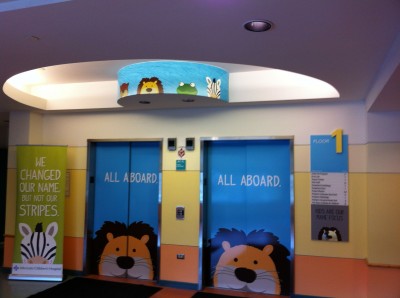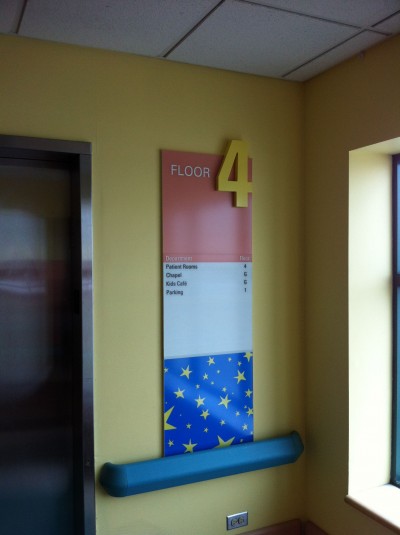By Philip Murphy
Research indicates thousands of hours of staff time in large health-care facilities and campuses are spent answering visitors’ questions about how to find their destinations. Granted, it only takes a few seconds or minutes each time to provide the necessary directions, but having to respond to wayfinding questions consumes valuable resources, as employees are interrupting their own work routines for this purpose.
Meanwhile, the frustration of being disoriented during their health-care experience is significantly reducing patients’ level of satisfaction. In surveys of patient complaints, getting lost continually appears high on the list.
In response, many health-care organizations are devoting a lot of attention today to providing more effective orientation and wayfinding instructions. Too often, however, they assume signs alone are the solution to this problem.
While it is likely signs will always be the mainstay of any wayfinding program, simply adding more signs will not inherently solve a facility’s wayfinding problems. Instead of a greater number of signs, the objective should be to make the existing sign system more effective.

Advocate Children’s Hospital in Chicago, Ill., recently commissioned a wayfinding master plan in conjunction with a new branding program.
Signs need to guide people in a logically unfolding sequence. Messages should be presented simply and clearly, such that even first-time visitors are able to immediately recognize their destination and the path to get there.
Currently, however, signs in most health-care facilities disseminate too much information and often at the wrong locations. Though based on a genuine desire to provide sufficient detail, they end up offering directions to virtually any place someone might need to go, usually too early in their journey, which only adds to confusion.
Progressive and alphanumeric
One solution to this problem of too much information on signs is progressive disclosure. This concept involves providing only the information needed to move a visitor from one decision point to the next.
This method is already used very effectively in most airports, for example, where passengers are guided in increments—first to the correct parking lot, then to the terminal building, then to the departures concourse and ultimately to the flight gate.
In an airport, passengers know their destination by way of their airline’s name, flight number and gate number and can follow highly visible cues. In a health-care environment, however, even when patients know a physician’s name and/or department, there tends to be little or nothing intuitive about the path to their destination. This is because health-care facilities are not organized linearly like airports are. For this reason, progressive disclosure in a hospital presents unique planning challenges.






